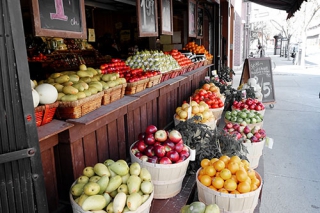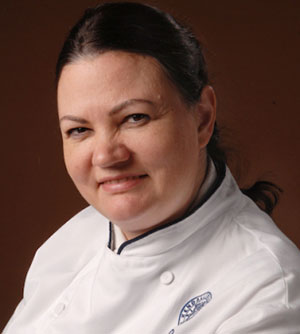
Instructor’s Homework: How Will You Excite Students to Create Delicious and Sustainable Farm-to-Table Dishes?
12 September 2017Teach students that using locally sourced ingredients is the perfect way to make their dishes stand out.
By Peggy Ryan, Kendall College School of Culinary Arts Instructor
Fall is just around the corner, and it is one of my favorite seasons. Along with the cooler temperatures, the Kendall College campus is full of activity as students and instructors begin a new term.
There is also an excitement in the kitchen, both on campus and at home, because fall-themed foods provide a sense of comfort. And I must confess, farm-to-table pasta dishes are among my favorites. I can already smell and taste a delicious butternut squash cappellaci, gnocci di ricotta with ricotta cheese dumplings and tortellini d’erbette.
Pasta, by itself, can be an ordinary meal. Part of the fun with creating a pasta dish is using your imagination to turn a typical entrée into a truly memorable meal. Using locally sourced ingredients is the perfect way to make your dish stand out.
Kendall instructors work closely with our young chefs to help them understand seasonality because it helps them think creatively. After they graduate, they could become professional chefs and restaurant managers where they would be the decision makers in this area.
It is an important skillset to master because the farm-to-table theme has taken off in recent years, and we expect this trend will continue to grow. That’s because restaurant goers crave foods that are in season. They are always searching for the taste of the ripe tomato, with the perfect balance of sweetness and acid, that they ate out of the garden as a child.
Restaurants that subscribe to the locally sourced philosophy differentiate their business and create a menu with personality. Rather than customers expecting to see the same list of items on a page, the menu evolves and guests experience something new during each visit. Ultimately, the restaurant delights its customers, giving them a truly unique experience during each visit.
It is important for us, as educators, to help our students understand the steps they can take to make sustainable choices and the positive impact these decisions have on their business and community.
Kendall students are incredibly lucky because we own a sustainable garden located in the heart of our Chicago campus. It is home to a variety of delicious fruits, vegetables and herbs. We use the garden in the classroom and in our fine dining restaurant to teach lessons about sustainability and creativity.
My homework assignment for you, my culinary instructor colleagues, is to find ways to help your students play an active role in this process. While having access to a garden is a terrific way to do this, it is not the only way. Visiting a farmer’s market or a locally sourced supplier are also fantastic options.
Allow your students to select the produce and develop meals that are unique to them. My hope is that this exercise will make your lesson memorable by encouraging your students to think creatively and take ownership of their education.
 Chef Peggy Ryan developed her love of good local foodstuffs while growing up on her family’s dairy farm in central Illinois. She has been an instructor at Kendall College in the School of Culinary Arts for 12 years, holding various positions including 11 years as the chef for the school’s Michelin recommended fine dining restaurant. Prior to her career at Kendall College, Chef Ryan spent many years cooking in Chicago and on Chicago’s North Shore.
Chef Peggy Ryan developed her love of good local foodstuffs while growing up on her family’s dairy farm in central Illinois. She has been an instructor at Kendall College in the School of Culinary Arts for 12 years, holding various positions including 11 years as the chef for the school’s Michelin recommended fine dining restaurant. Prior to her career at Kendall College, Chef Ryan spent many years cooking in Chicago and on Chicago’s North Shore.
